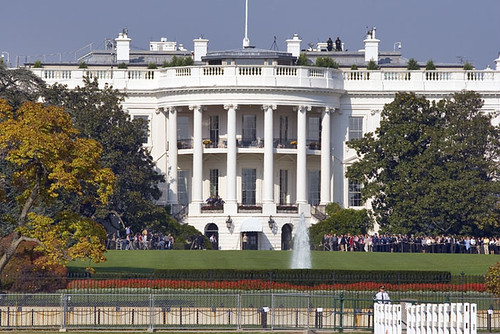White House releases report on reflecting sunlight to cool the earth, no formal study planned now
White House #WhiteHouse

Full frame sun, Climate change, Heatwave hot sun, Global warming from the sun and burning
Chuchart Duangdaw | Moment | Getty Images
On Friday, the White House released a federally mandated report on solar geoengineering, which is an umbrella term that describes methods of reflecting sunlight away from the earth to cool the atmosphere.
The Biden-Harris administration has no plans underway to launch a comprehensive research program into solar radiation modification, according to a senior administration official.
But the report also says there is good logic for a cohesive research agenda on this topic.
“These unknowns, and the ever-evolving understanding of complex Earth systems, provide a compelling case for research to better understand both the potential benefits and risks,” the report says.
The report comes from the White House Office of Science and Technology Policy and was produced to fulfill a congressional mandate included in the Consolidated Appropriations Act passed in 2022, which asked the White House to develop a “research governance framework to provide guidance on transparency, engagement, and risk management for publicly funded work in solar geoengineering research.”
For decades, solar radiation modification has been relegated to the realm of science fiction. But as the effects of climate change have become more obvious and dangerous, some argue that climate intervention may be less dangerous than the global warming that would happen without them.
Heat is a worthy adversary to mitigate — it’s often called “the silent killer” — but solar radiation management would not address other implications of climate change, like ocean acidification or air pollution.
The White House report focuses on two methods of solar geoengineering.
Stratospheric aerosol injection is releasing particles of sulfur dioxide or another substance into the upper atmosphere to reflect sunlight away from the Earth. Marine cloud brightening is meant to improve the reflectivity of certain clouds by injecting sea salt or through other methods.
Fragmented research into solar radiation modification is already happening in federal science agencies, and research into topics like volcanic action and cloud-aerosol interactions could provide useful foundational knowledge.
Volcanic eruptions and large plumes of wildfire smoke provide a natural analog for engineered stratospheric aerosol injection. Ship tracks, which are clouds that form around ship exhaust, demonstrate the theory of marine cloud brightening.
But research into solar radiation management is limited and uncoordinated, leaving substantial gaps. Having a research plan would help the United States prepare for deployment of solar radiation modification by another government or a private body.
This chart shows the various forms that solar geoengineering could take. Courtesy: Chelsea Thompson, NOAA/CIRES.
Chelsea Thompson, NOAA/CIRES
Solar radiation management has the benefit of being fast. “SRM offers the possibility of cooling the planet significantly on a timescale of a few years,” the report says.
But it also has a lot of unknown risks — what the White House report called “known unknowns.”
Stratospheric aerosol injection could accelerate ozone depletion and reduce biodiversity, for example. Other known unknows include potential changes in patterns of precipitation, sea-level rise, terrestrial vegetation, coral reefs, crop production and other ecosystem changes. It could also harm human health by increasing particulate matter, for instance.
In this context, the White House report calls for a “‘risk vs. risk’ framing,” where solar geoengineering would be studied in an effort to quantify the specific risks involved in deploying versus not deploying it.
For example, allowing warming to proceed without solar radiation management might see more human death from extreme heat, but that would have to be compared against the health risks from more particulate matter in the air.
Critically, solar radiation modification is not a permanent solution. The only real solution to mitigating the effects of climate change is by reducing greenhouse gas emissions. The report from the White House says that a research agenda into solar radiation modification would sit next to “the foundational elements of greenhouse gas emissions mitigation and adaptation.”
Also on Wednesday, the European Union also formally addressed solar geoengineering, saying it is not a climate solution and that not enough is understood about these interventions to deploy them.
Like the United States, the European Union also says that solar geoengineering is not a climate solution and says the current level of understanding of the implications of such interventions is not sufficient to deploy them.
“In the current state of development, a deliberate intervention in the Earth’s natural systems, such as a solar radiation modification (SRM) deployment, represents an unacceptable level of risk for humans and the environment,” the European Commission stated in documents released on Wednesday.
However, the European Union also said it would support international, collective research into the topic.